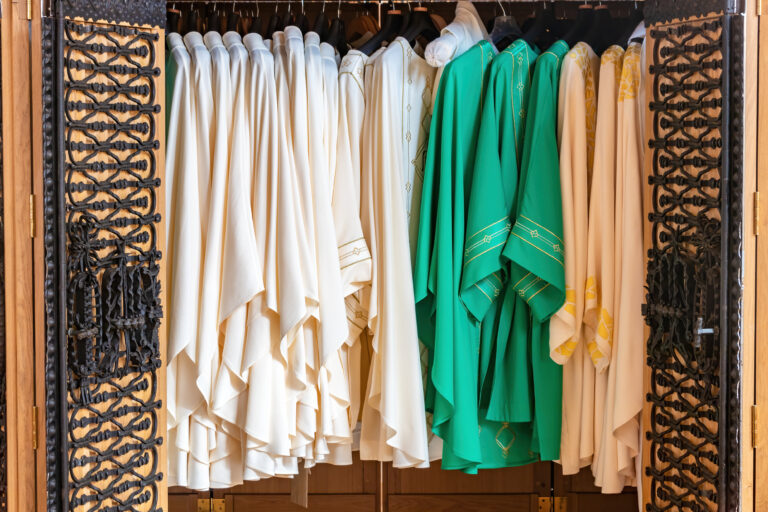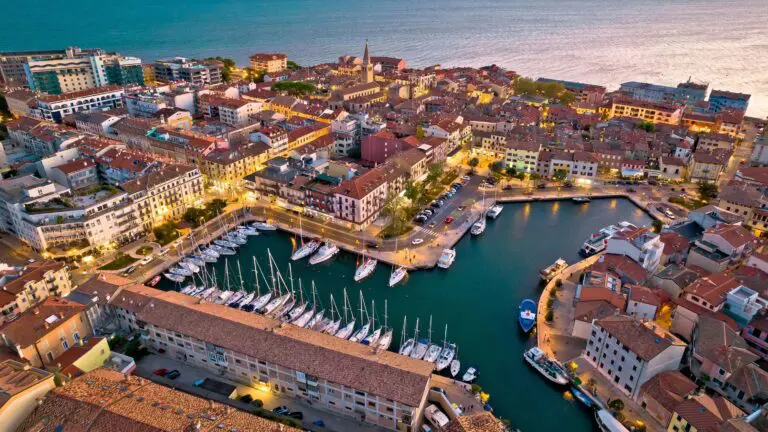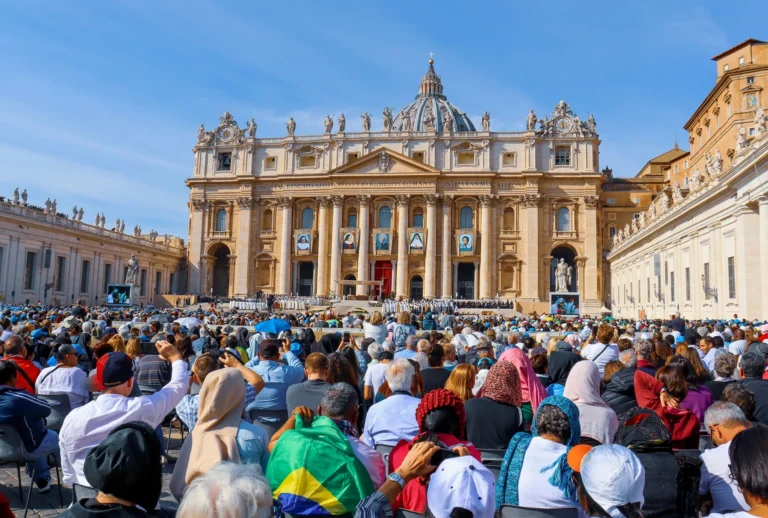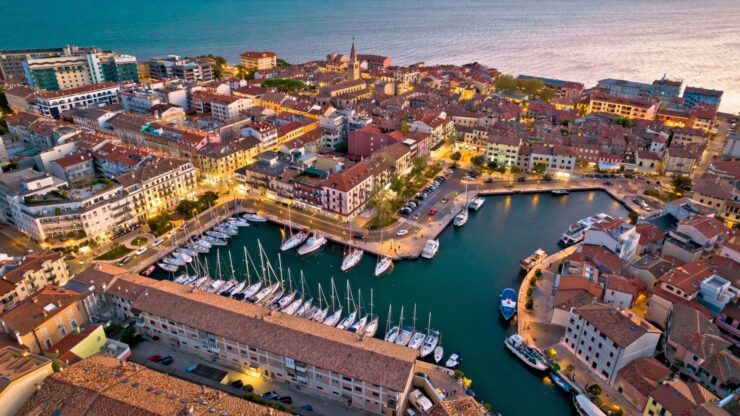In Catholic worship, the sense of sight, particularly color, is very significant. The colors of a Catholic priest’s vestments alert the faithful that special occasions are approaching.
The Origin
The early Christians had no code of colors linked with the seasons, and the Eastern churches have no norms or customs in this regard to this day. The Roman emperor Constantine bestowed a “holy robe…fashioned with golden threads” on Bishop Macarius of Jerusalem for use at baptisms (Theodoret, Ecclesiastical History, Book II, chapter 23). At the close of the fourth century, there are allusions to gleaming white clothes worn by Eucharistic celebrants (Apostolic Constitutions, Book VIII, chapter 12; Jerome, Dialogi contra Pelagianos, Book I, chapter 29). Inventories of Frankish churches from the 9th century show a range of colors used for vestments, but no specific order in which they were employed. The same-period Ordo of St. Amand particularly mentions dark garments during major litanies and black ones at the Feast of Purification (February 2).
Though minor changes are permitted, the contemporary color sequence of the Roman Catholic Church was originally established in Pope Innocent III’s work De Sacro Altaris Mysterio (Book I, chapter 65, penned before his election as pope in 1198). White is utilized as a sign of purity on all Lord’s feasts (including Maundy Thursday and All Saints’) as well as confessors’ and virgins’ feasts. Red is used during Pentecost to represent the flaming tongues that descended upon the Apostles as they received the Holy Spirit, as well as at feasts honoring the martyrs, Apostles, and the Holy Cross to represent their bloody emotions (sufferings and deaths).
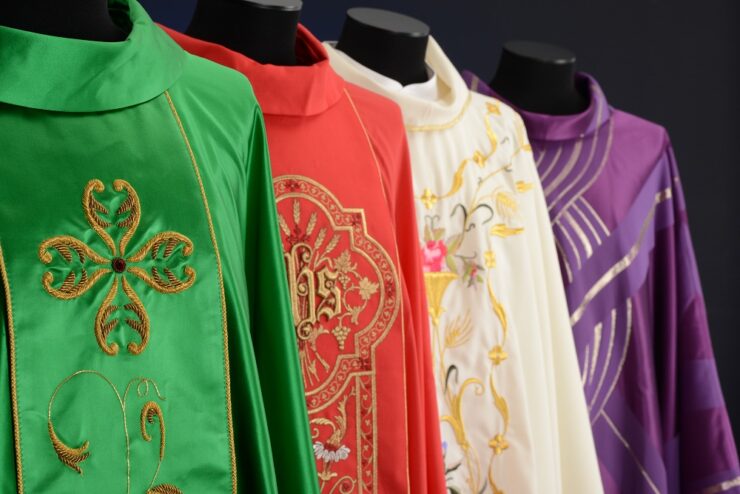
On days of fasting and penitence, as well as at memorials for the fallen, black is used as a sign of grief; however, violet, symbolizing the alleviation of black, is permitted throughout Advent and Lent. On other days, green is used as a compromise color to separate itself from black, red, and white. Innocent’s symbolism is founded on allegorical (symbolic) readings of colors and flowers referenced in the Bible, particularly in the Song of Solomon.
Other colors were employed in churches in the later Middle Ages, such as blue for particular Virgin Mary feasts and rose (a moderation of violet) on the third Sunday in Advent and the fourth Sunday in Lent. Pope Pius V’s missal from 1570 ordered Innocent III’s sequence, including a rose on the two Sundays indicated. The Congregation of Rites authorized the use of gold vestments in place of green, red, and white garments in 1868. The usage of vestments in Medieval English varied greatly, but the overarching concept was to wear the finest vestments, of whatever color, on major feast days and others on minor days of importance.
Priests of the Catholic Church wear garments of various colors on Sundays and during eulogies. These hues are frequently a representation of the liturgical calendar’s time of year. Except in times of grief, priests normally adhere to the annual evolution of vestment colors.
The color for each day in the liturgical calendar corresponds to that day’s primary liturgical celebration, even if Optional Memorials (possibly in a different color) are selected instead.
Rose
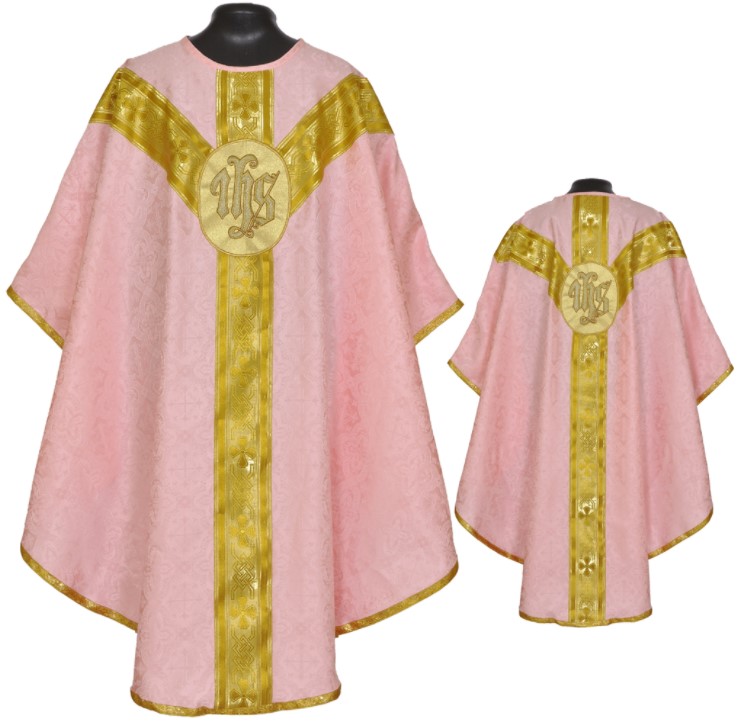
The color rose can be worn on the third Sunday of Advent and the fourth Sunday of Lent as a symbol of impending joy. Certain colors are worn these days to represent Christ’s love and joy. They’re meant to remind Catholics of the joys of prayer and penance.
Red
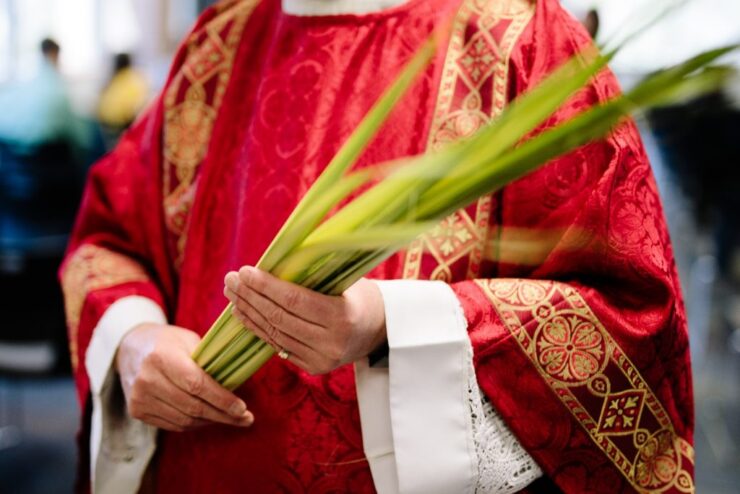
For the feasts of the Passion of Jesus and the Holy Spirit, representing red tongues of fire, as well as for martyred saints who shed their red blood for Christ. Red represents passion and blood. It is worn on Pentecost, Palm Sunday, Good Friday, and martyrs’ feast days. Cardinals wear red to demonstrate their commitment to the church and the Pope. It’s meant to symbolize the blood they’d shed for Christ and the church. Kids wear red to symbolize Christ’s passion at Confirmation.
Blue
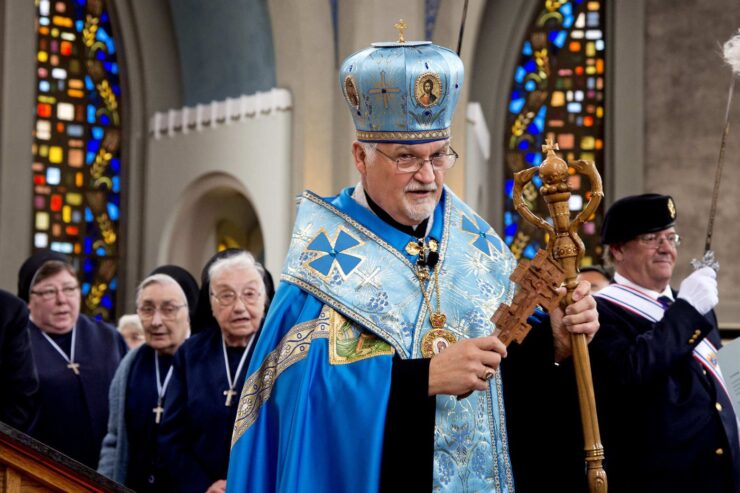
Blue vestments are only worn once a year, on the Feast of Mary.
Gold and White
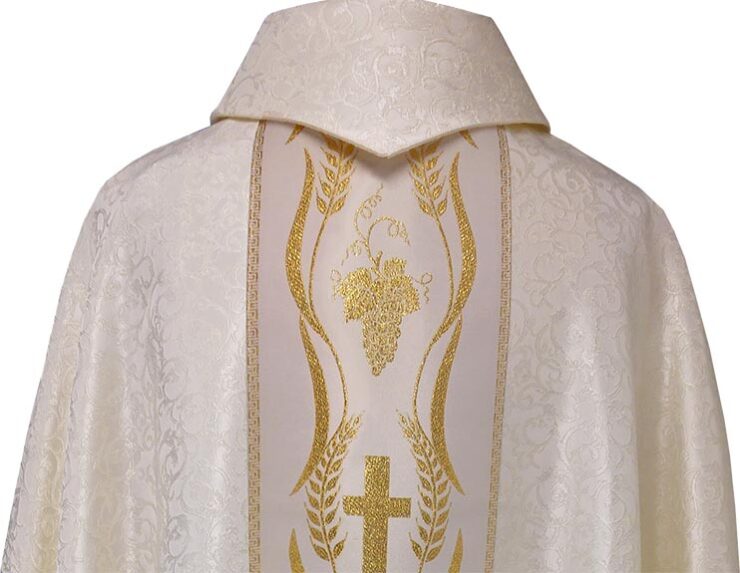
Depending on where you live, your priest may wear gold or white robes. These robes are typically worn at Easter and Christmas. They represent Christ’s birth and resurrection. Clergymen who perform funeral and eulogies rites may wear white robes. The white robes are worn to commemorate the deceased’s life, rather than his or her death. The Pope’s default robes are white, reflecting his status as Christ’s closest ally.
Violet or Purple
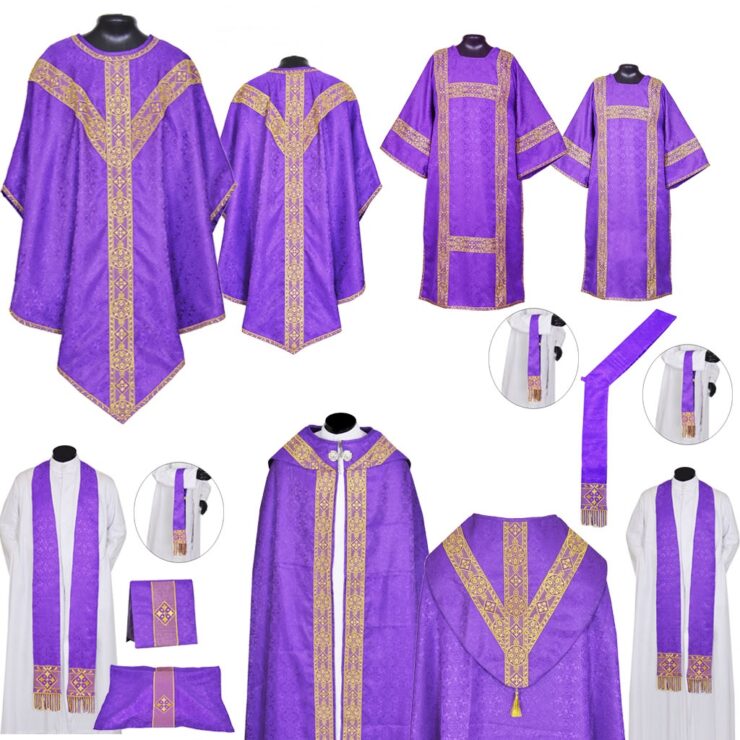
These colors are used throughout Advent and Lent, and they may also be utilized at Funeral Masses, along with white and black. Purple denotes sacrifice, preparation, and penance when worn during Lent or Advent. It is typically worn during funerals due to its connotation with sadness. Purple vestments are worn to urge funeral attendees to pray for the departed’s penance and absolution.
Green
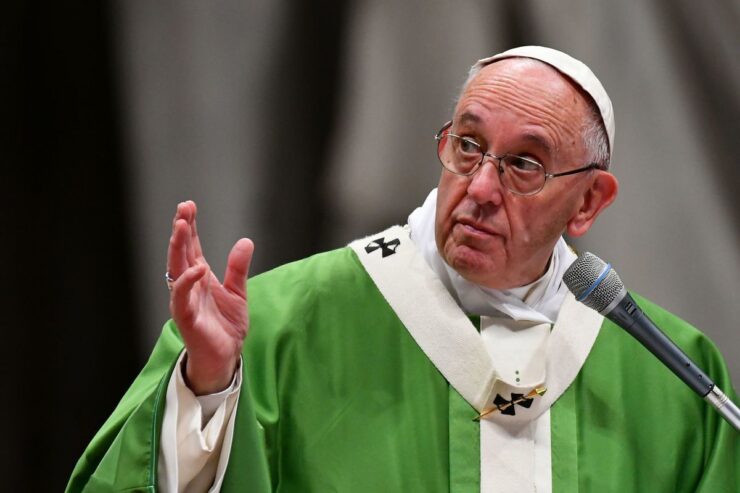
The color of the vestments worn throughout the service. Ordinary time is the remainder of the year that isn’t Easter or Christmas – it’s still significant, it just has a boring name. Green is the traditional hue for “Ordinary Time,” the period between Christmas and Easter, and vice versa. It is designed to express the expectancy and hope in Christ’s resurrection. Green represents the optimism and life that each new day brings.
Black
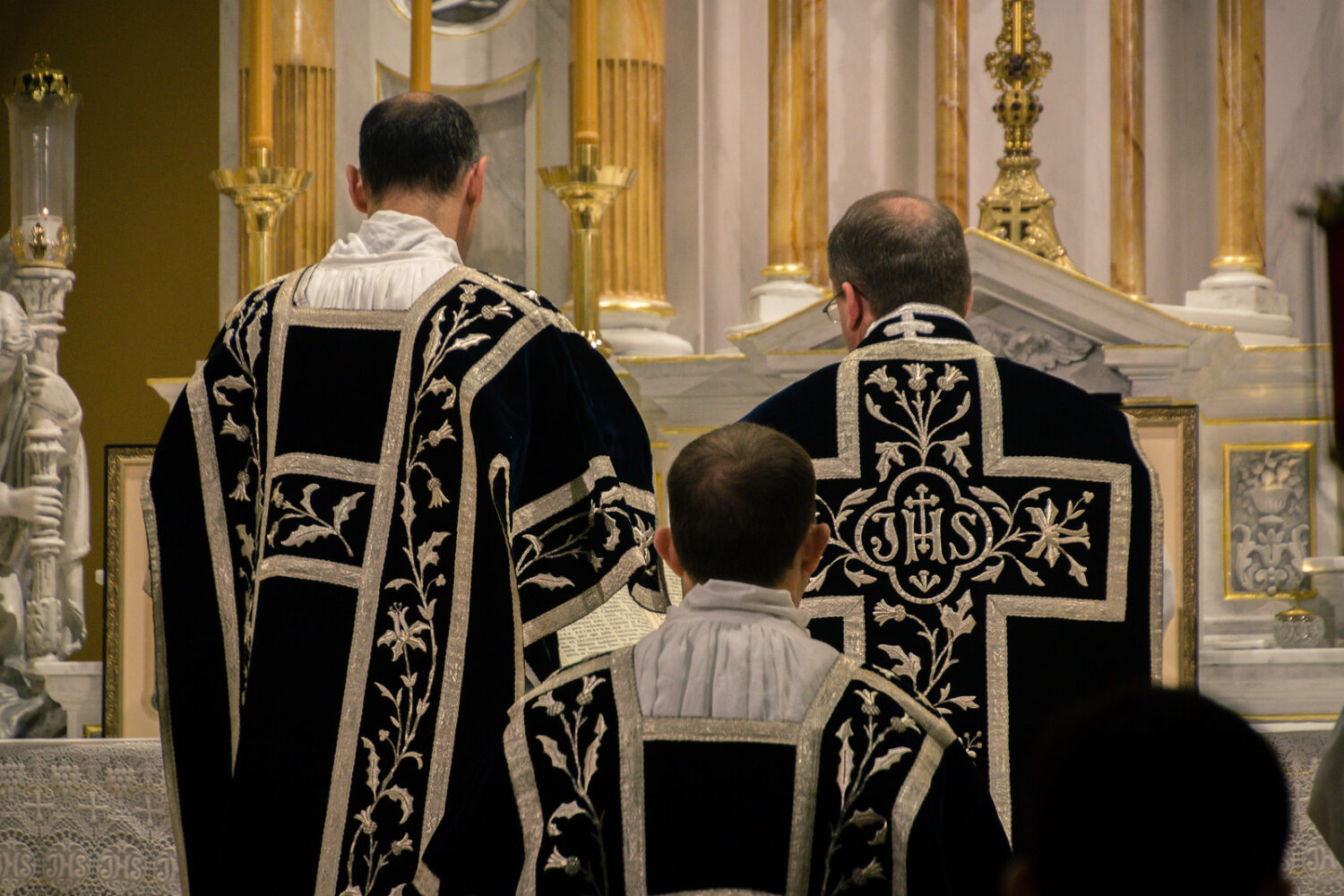
While not as widespread in the United States, black robes were once used during funerals. They can still be found outside of the United States, but they became less popular following the Second Vatican Council in the 1960s. The black vestments are intended to express the grief experienced by individuals attending funerals. The black vestments remind people to pray for those who have passed away. The clergy’s daily clothing is often black. It is designed to represent the humility and sacrifice of clerical life, to bring them closer to God.
The color of the liturgical vestments is generally reflected in church decorations and flowers and is available at vestments24.com.

